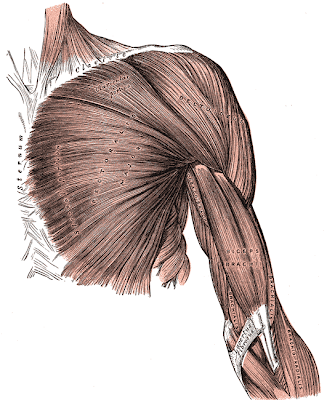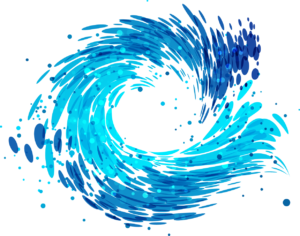
Q: How can yoga help people that have costochondritis? I have it now and then and I can’t do some yoga poses that open the chest as they trigger the pain. I had it for the first time 3 years ago and it never really went away, keeps coming back.
A: Costochondritis (CC) is a fairly common cause of chest wall pain in adults in the US and around the world. According to the Mayo Clinic website:
“Costochondritis (kos-toe-KHON-dri-tis) is an inflammation of the cartilage that connects a rib to the breastbone (sternum) — a junction known as the costosternal joint. Pain caused by costochondritis may mimic that of a heart attack or other heart conditions.”
This last statement about this kind of pain mimicking heart attack has led many a student of mine with sudden onset of chest pain to the hospital, fearful they were having one! In the case of costochondritis, all the tests come up normal, which is obviously a huge relief, but the pain can persist, as it has for our reader.
Let’s look at some other facets of costochondritis before we specifically look at what yoga’s role is in helping or hurting it. Modern medicine’s view on CC is that most of the time there is no apparent cause for the inflammation between the rib and cartilage, which can be frustrating if you have it because if you knew what caused it, you could change what you are doing to possibly avoid it happening again! So the focus shifts to treating the pain, usually with anti-inflammatory medications like ibuprofen, as well as modifying your activities to avoid movements that aggravate your pain. Since most of the connections between the ribs and breastbone involved are located to the right and left side your breast bone, this is usually where the pain shows up. Apparently, it shows up more often on the left side of the breastbone (same area some heart attack pain can be) and often involves more than one rib. One distinguishing feature that sets it apart from heart pain or angina, is that the pain from CC often happens with a deeper breath or when coughing.
And although I mentioned above that most cases of CC have no known cause, some cases are associated with a blow to the chest, heavy lifting or strenuous exercise, severe bouts of coughing, certain types of arthritis, or the spread of tumors to this area. In addition, you are at greater risk of developing a bout of CC if you are woman or if you are over 40 years of age. The diagnosis of CC is usually made when your history is consistent with the kind of pain I described above, if you are tender-to-touch over the side of your breast bone or when you move your chest and arms in certain ways, and if you have ruled out more serious problems, like heart pain, GI reflux or lung related illnesses, like pneumonia. Hopefully, you won’t have to do the ER full heart work up like one of my students had to undergo this past week!
In addition to NSAIDS like ibuprofen, your doc might add other medications to your treatment regimen. If the pain is severe, a narcotic medication might be suggested. If the condition lingers and becomes more chronic (which does not happen often but does happen), certain anti-depressants and anti-seizure medications can be added, not for depression or seizures, but because they have been found useful for chronic pain management. The downside to all these meds is that they often have unwanted and occasionally serious side effects.
On the non-medication side of things your doctor may recommend, you might be referred to a physical therapist, who could teach you gentle stretching exercises (ding, ding, ding!) or the use of an electrical stimulation unit called a TENS unit. On your own, you can experiment with the effect of ice or heat on your symptoms to see if they provide any relief from the pain, as well as good amounts of rest to avoid aggravating activities.
Our reader is interested in how yoga might be used to help costochondritis, but also, I suspect, how to do so cautiously, as she has noticed that the yoga asana can also aggravate or trigger her CC pain. And therein lies the rub. If you are pain free, a regular yoga practice can keep the rib cage and the joints that CC affects mobile and the muscles in the region strong and open. A regular yoga practice has been found to improve conditions that could lead to costochondritis, such as arthritic conditions. And yoga has been found to decease inflammation in those who practice it regularly, so it might help reduce the chances of developing CC in the future.
On the other side of the fence, some forms of yoga and certain yoga poses fall into the category of strenuous exercise or stressful activities for the sternal joints. Dhanurasana (Bow pose) comes to mind as a pose that stresses the joints along the sides of sternum as it stretches the front chest, and a 90-minute power yoga flow with lots of Chatarunga Dandasana could also overtax the front chest joints as well. So you would want to assess if you developed CC within a short time of doing such poses, and give ‘em a rest if you make the connection.
Hopefully, your yoga practice is not the source of this kind of pain. But once costochondritis shows up, you will likely need to assess, monitor and modify your poses and practices if they seem to trigger or aggravate your symptoms. It is almost always a safe bet you can do supported restorative style poses, as they are less likely to negatively affect the front chest if done with the goal of keeping that area quiet. And supported, gentle practices are likely to lower your stress response, which should have a positive impact on healing. They should also allow your immune system to function optimally, thereby reducing the chances of developing new respiratory illness like the common cold, thus avoiding illness associated with coughing. In addition, always think outside the yoga asana box, and add in gentle pranayama (probably not long, deep inhales and exhales for a while), visualizations and meditations in supported positions while the inflammation around the breastbone joints diminishes.
And as the pain symptoms of costochondritis diminish, gradually re-introduce more active poses and practices to get your body back to its previous healthy balance, hopefully leaving the memory and risk of recurrence of costochondritis in your rear-view mirror.
—Baxter
Follow Yoga for Healthy Aging on Facebook ° To order Yoga for Healthy Aging: A Guide to Lifelong Well-Being, go to Amazon, Shambhala, Indie Bound or your local bookstore.


Hi Baxter,
It is rare to see anything on costochondritis in the yoga world. My own experience with it (though never officially diagnosed as such), included an initial visit to the emergency room, which then led to more doctor visits with normal EKG readings. I was prescribed 600mg of Ibuprofen to take 4x daily, which I reduced to 2x daily as needed. I was told that I likely had pericarditis, though that was never officially diagnosed either. This pain would worsen whenever I did any back bending or stronger types of pranayama. I backed off to the point where my practice changed completely into primarily restorative work (as you have advised). I was eventually sent to a Cardiologist who performed a stress echocardiogram as well as a CT scan, to rule out pericarditis or anything else of grave concern. All results were normal. It was not until recently that I went to another PCP with De Quervain's Tendinitis in my right wrist, when I was sent to an Osteopath. This Osteopath did some "dry needling" around the rhomboid area, which helped dissolve the pain. Ongoing visits kept it up. But more than anything, what I discovered throughout all of these odd types of inflammation is that it was occurring whilst being perimenopausal. It affected not only my wrist and my chest, it also occurred in my hips and my pelvis. I was seeing a specialist in pelvic floor muscles, an acupuncturist, a massage therapist, a hand surgeon, and an osteopath to manage the pain. I was even recently prescribed Cymbalta (an antidepressant often used for Fibromyalgia) but chose not to take it. Thankfully, after four years, it is all beginning to subside. This journey has informed not just me, my teaching and my practice, it has also informed all the practitioners I have been seeing – that hormones play a significant part in chronic pain and inflammation. Which leads me to this – while we enjoy getting our "asanas on" in our practice, the real yoga comes when we are challenged with the realities of aging. Thank you for your blog. It has not only been useful, it has been of great comfort to me that I am not alone in all of this.
What is diagnosed as CC could also be pain from trigger points in the chest muscles (Pectoralis major) caused by overwork (coughing, lifting…) as explained in Clair Davies, The Trigger Point Workbook, and Travell and Simons' Trigger Point Manual. Trigger points are small, persistent local contractions, palpable as painful knots. A simple but effective remedy is massage of the knots several times a day until they fade away (see Clair Davies books for instructions), then gently stretching with chest-opening asanas, and checking and if necessary adjusting your postural habits.
Thank you for the explanation! I will keep an eye on which poses trigger the pain and modify them (I know chaturanga is the worst for me). I am doing more yoga now and I did see an improvement. I am pain free for about 3 or 4 months now. And I hope at some point I will be able to do all the poses I want.
I've struggled with bouts of CC since college (I'm 39 now). I've been practicing yoga since 2000, and usually cannot do any sort of chaturanga-ish movement without a flareup. For years I was in a cycle of rest-heal-try to build upper body strength-flare up-rest-etc. I had some success with chiropractic adjustment, but never anything long-lasting. I saw a Rolfer twice in Sept 2013, and I *think* that she "fixed" me. She found a twisted rib, with corresponding issues in the tissues surrounding it and in my neck. I haven't had any problems since then, but I still haven't busted out any big chaturangas…building strength slowly, and just enjoying being pain-free in everyday activities. Anyway, I appreciate the above article, and wanted to throw out this option for others who maybe haven't heard of it.